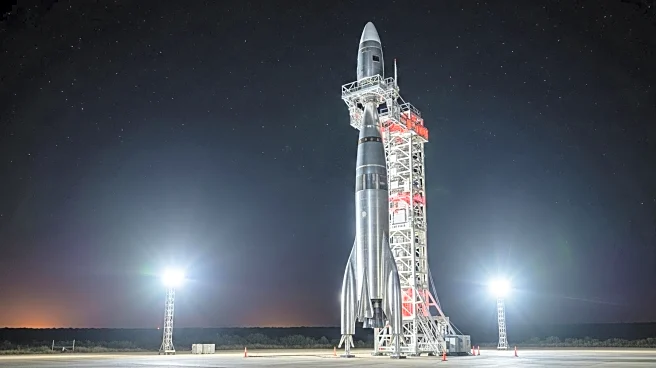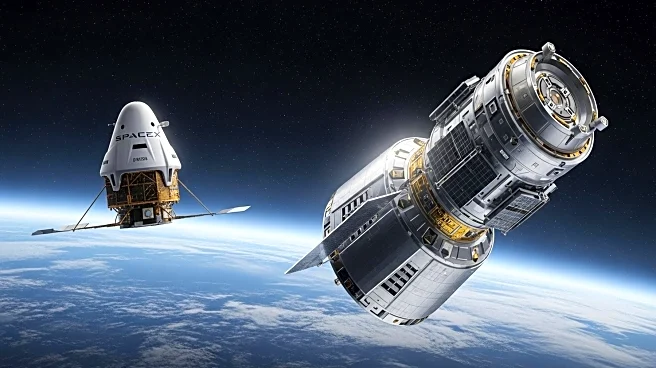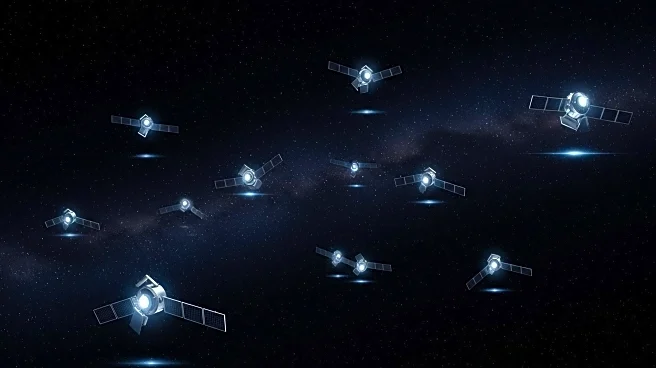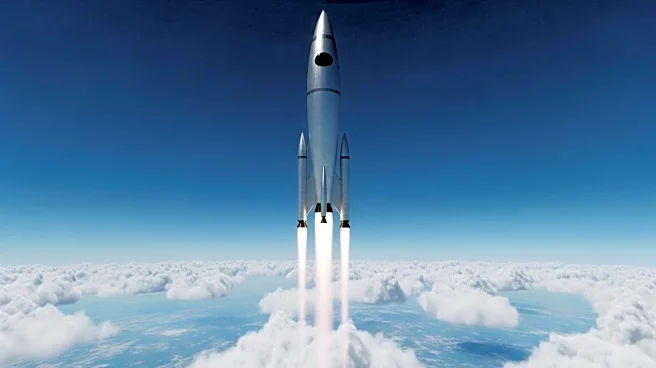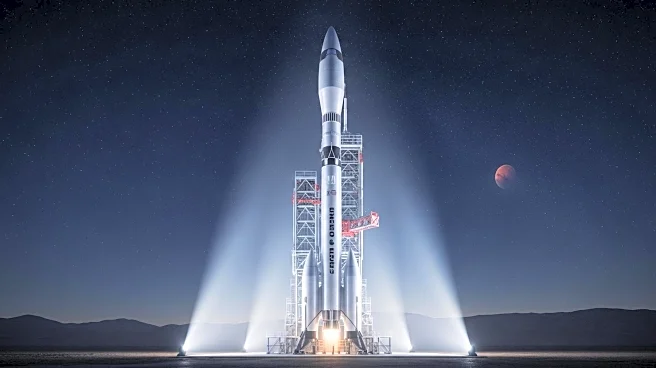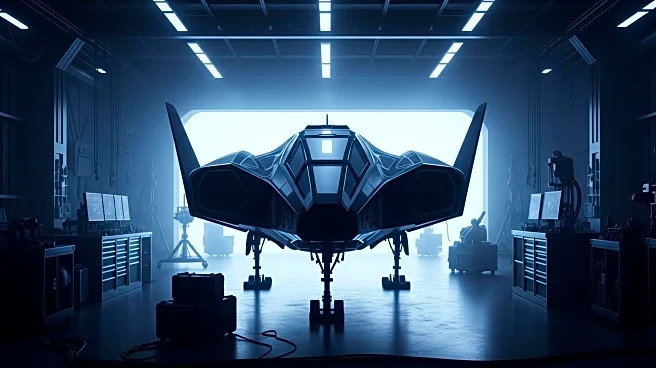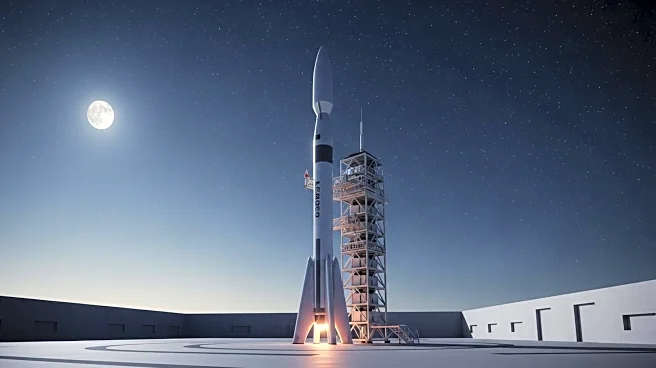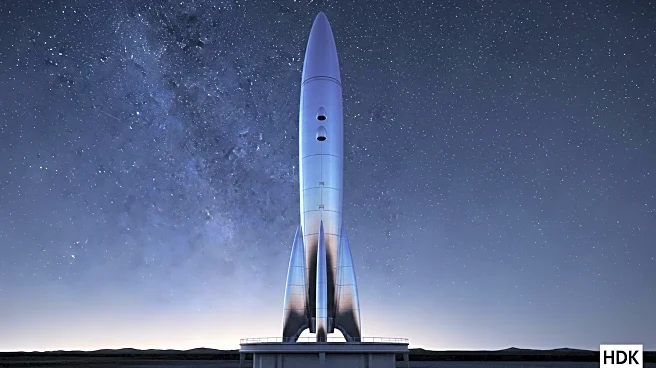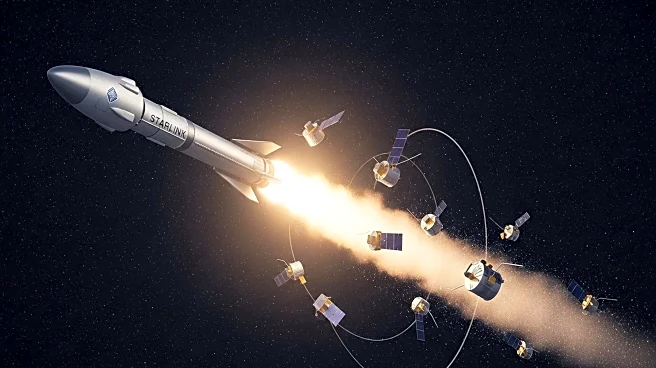What is the story about?
What's Happening?
SpaceX is gearing up for its 11th full-scale test flight of the Starship, scheduled for October 13, 2025. This flight marks the last of the current 'Version 2' model before transitioning to the larger 'Version 3' rockets in 2026. The launch will occur at SpaceX's Starbase spaceport in South Texas, with the Super Heavy booster set to splash down in the Gulf of Mexico and the Starship upper stage landing in the Indian Ocean. The flight plan includes testing the rocket's satellite deployer and reigniting one of the Raptor engines in space to adjust the vehicle's reentry path. SpaceX aims to demonstrate the reliability of these systems following a successful test flight in August, which broke a streak of four consecutive failures.
Why It's Important?
The upcoming Starship flight is crucial for SpaceX as it seeks to validate the improvements made to its launch system and pave the way for future missions into low-Earth orbit. Successful demonstrations of the satellite deployer and engine reignition are vital for SpaceX's long-term goals of achieving regular orbital flights. The test also serves as a precursor to the debut of the upgraded Starship Version 3, which promises enhanced capabilities. The outcomes of this flight could significantly impact SpaceX's position in the aerospace industry, influencing future contracts and partnerships.
What's Next?
Following this test flight, SpaceX plans to introduce the Starship Version 3 in early 2026, which will feature larger and more advanced technology. The company will continue to refine its launch strategies and vehicle designs based on the results of the upcoming flight. Stakeholders, including government agencies and commercial partners, will be closely monitoring the test's outcomes to assess SpaceX's readiness for more ambitious missions, including potential crewed flights and interplanetary travel.
Beyond the Headlines
The test flight also highlights SpaceX's approach to innovation through stress-testing and iterative design improvements. By intentionally exposing vulnerable areas of the vehicle to extreme conditions, SpaceX aims to gather valuable data that will inform future design enhancements. This method reflects a broader trend in aerospace engineering, where real-world testing is used to push the boundaries of technology and ensure safety and reliability.
AI Generated Content
Do you find this article useful?
